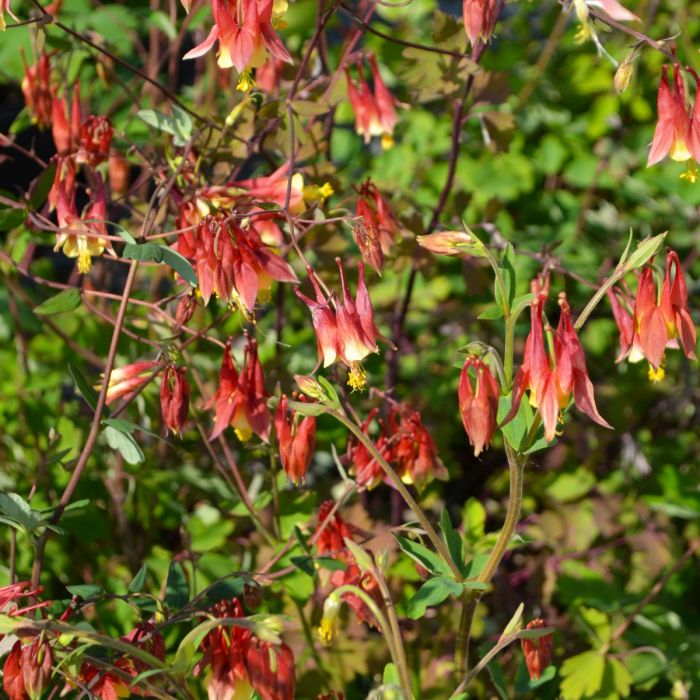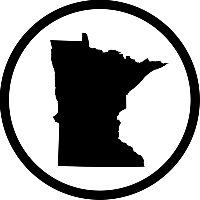Aquilegia, American Columbine 'Minnesota Native'



Out of stock
Sold out for the season- Sun Preference
- Full-Sun, Part-Sun
- Bloom or Harvest Time
- May, June
Description
A spring flowering native producing a multitude of nodding, red flowers with a yellow interior. Adaptable to sun or shade. Dry to medium soils.
Minnesota's Largest Selection of Perennials
Discover an unparalleled selection of perennials at Gertens! With the largest variety in Minnesota, we offer endless options of colorful perennials, natives, and pollinator plants to beautify your garden year after year. From vibrant flowers to lush foliage, our perennials are perfect for adding beauty and charm to your outdoor space. Visit Gertens today and see why we're known as Minnesota's Destination Garden Center!
Details
Columbine | Aquilegia canadensis
Plant Height: 24 inches
Flower Height: 3 feet
Spread: 24 inches
Sunlight: Full sun to Partial Shade
Hardiness Zone: 2a
Other Names: American Columbine, Wild Red
Brand: Gertens
Description:
Native: Flower: Showy, Good Cut.Attracts: Hummingbirds.Tolerate: Rabbit, Deer, Drought, Dry Soil
Ornamental Features
Columbine has masses of beautiful nodding tomato-orange bell-shaped flowers with yellow eyes and orange spurs at the ends of the stems in late spring, which are most effective when planted in groupings. The flowers are excellent for cutting. Its lobed compound leaves remain light green in color throughout the season.
Landscape Attributes
Columbine is an herbaceous perennial with an upright spreading habit of growth. Its relatively fine texture sets it apart from other garden plants with less refined foliage.
This plant will require occasional maintenance and upkeep, and should be cut back in late fall in preparation for winter. Deer don't particularly care for this plant and will usually leave it alone in favor of tastier treats. Gardeners should be aware of the following characteristic(s) that may warrant special consideration;
- Insects
- Disease
- Self-Seeding
Columbine is recommended for the following landscape applications;
- Mass Planting
- Rock/Alpine Gardens
- Border Edging
- General Garden Use
- Groundcover
- Naturalizing And Woodland Gardens
- Container Planting
Planting & Growing
Columbine will grow to be about 24 inches tall at maturity extending to 3 feet tall with the flowers, with a spread of 24 inches. It grows at a fast rate, and under ideal conditions can be expected to live for approximately 3 years. As an herbaceous perennial, this plant will usually die back to the crown each winter, and will regrow from the base each spring. Be careful not to disturb the crown in late winter when it may not be readily seen!
This plant does best in full sun to partial shade. It does best in average to evenly moist conditions, but will not tolerate standing water. It is not particular as to soil type or pH. It is somewhat tolerant of urban pollution. This species is native to parts of North America.
Columbine is a fine choice for the garden, but it is also a good selection for planting in outdoor pots and containers. With its upright habit of growth, it is best suited for use as a 'thriller' in the 'spiller-thriller-filler' container combination; plant it near the center of the pot, surrounded by smaller plants and those that spill over the edges. It is even sizeable enough that it can be grown alone in a suitable container. Note that when growing plants in outdoor containers and baskets, they may require more frequent waterings than they would in the yard or garden. Be aware that in our climate, most plants cannot be expected to survive the winter if left in containers outdoors, and this plant is no exception. Contact our experts for more information on how to protect it over the winter months.
More Information
| Common Family Name | Columbine |
|---|---|
| Gerten Grown Plants | Gerten Grown Plants |
| MN Native Plants | MN Native Plants |
| Sun Preference | Full-Sun, Part-Sun |
| Bloom or Harvest Time | May, June |
| Mature Spread (Range) | 12" - 24" |
| Mature Height (Range) | 25" - 36" |
| USDA Hardiness Zone | 2, 3, 4, 5, 6, 7, 8 |


